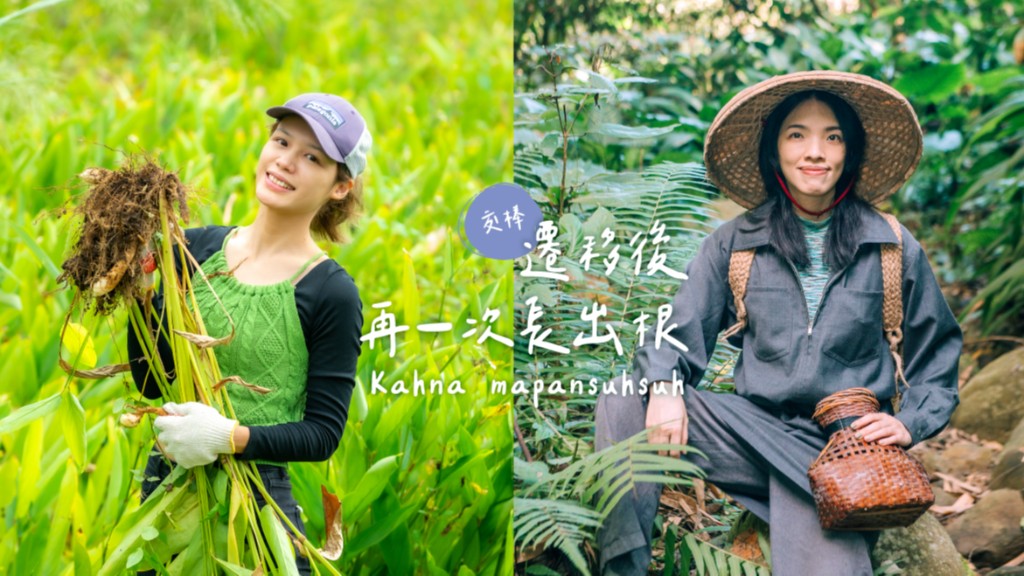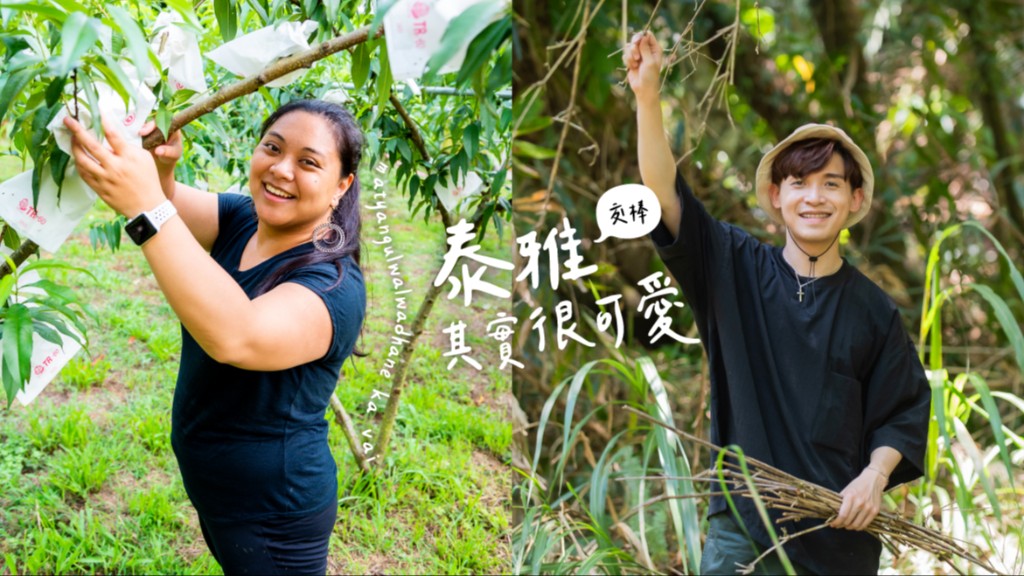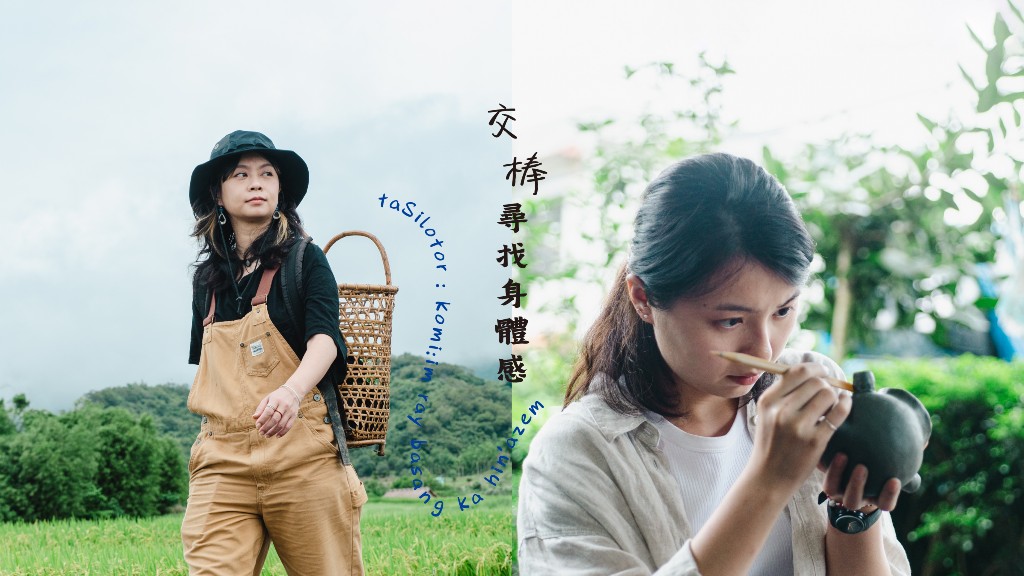The tourism business at Smangus is divided into accommodations and restaurants, wholly joint operated by the entire community, and accounts for 70% of community income. Let's follow Muni and learn all about the ins and outs of the tourism industry!

The accommodation group is in charge of housekeeping, which is from 9:30 to 14:00 every day, including replenishing amenities, changing sheets, and cleaning the bathroom and the floor. Groups of 4 (roughly 20 people, more during summer and winter holidays) against rooms that could house more than 200 people. When they finish their own area, they will move on to support other areas so that all housekeeping can be completed before tourists check in.

Kyomi demonstrates how amenities are placed in the room for Muni to copy into other rooms. But the lack of faith in herself caused Muni to constantly travel back and forth between the rooms to check.
In the past, beds at Smangus were bunkbeds that could house up to 400 to 500 guests, but the immense excess of tourists not only adversely impacted the quality of accommodation, increased the amount of garbage, but also became a great burden to the staff. 8 years ago, they adjusted the room types, increased the number of suites and decreased the number of guests they can take in, and cut back on the use of disposable utensils. Be it the shift rotation or adjustments made to the room types; everything was jointly decided by the people in the community.
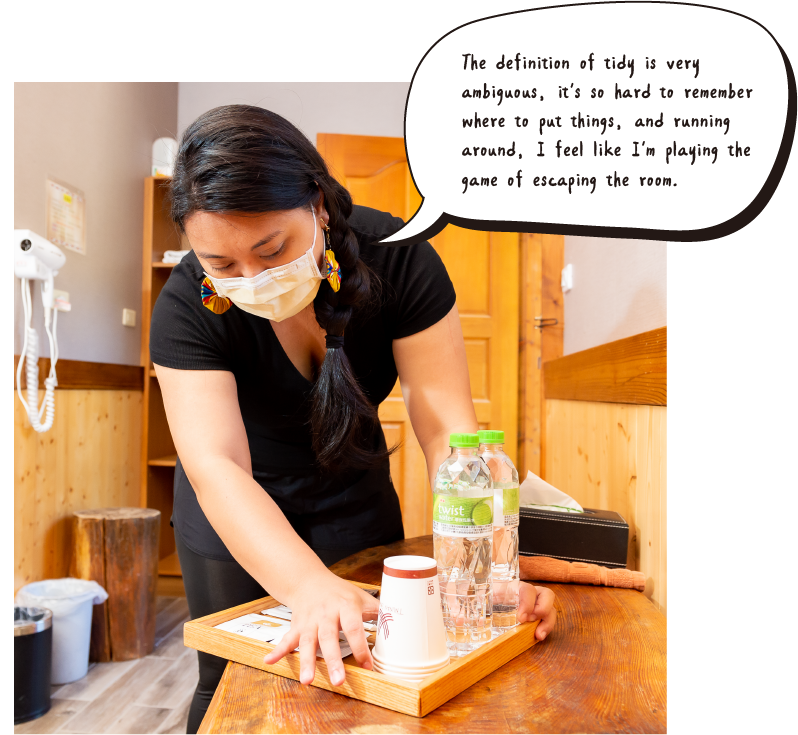

The restaurant group is split into the back and front of houses for different restaurants, and they are in charge of the cooking, prepping, plating, and dishwashing in the back, and the seating, serving, and talking to customers in the front.
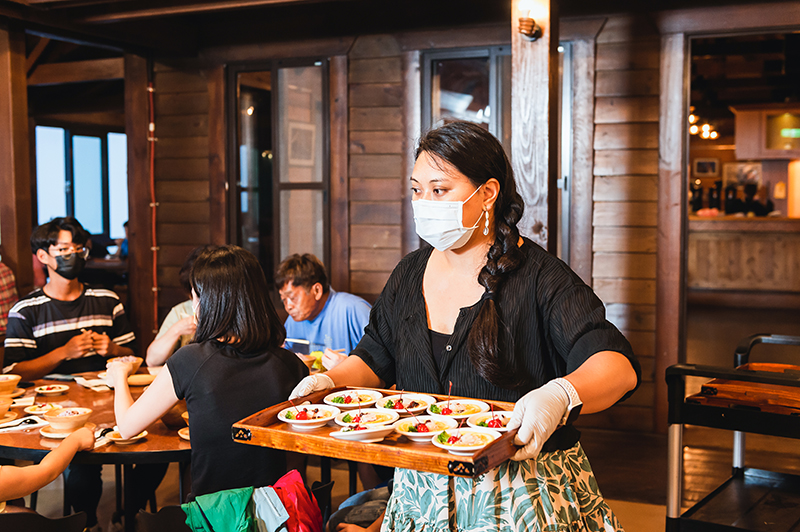
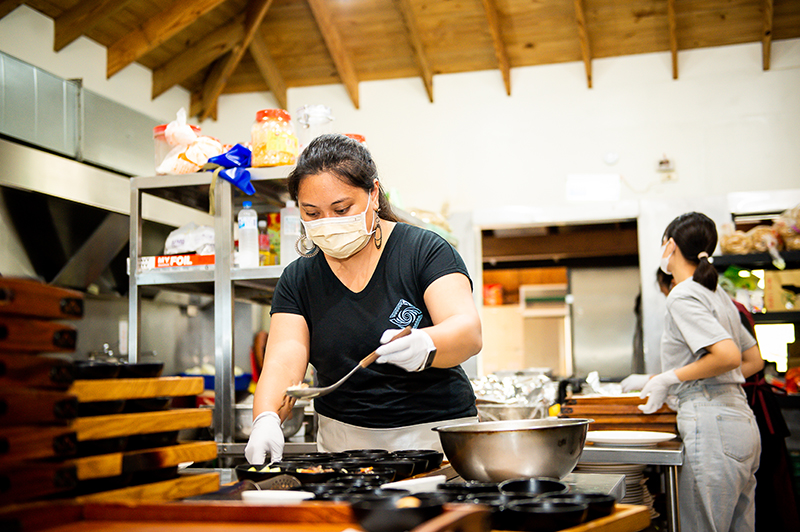
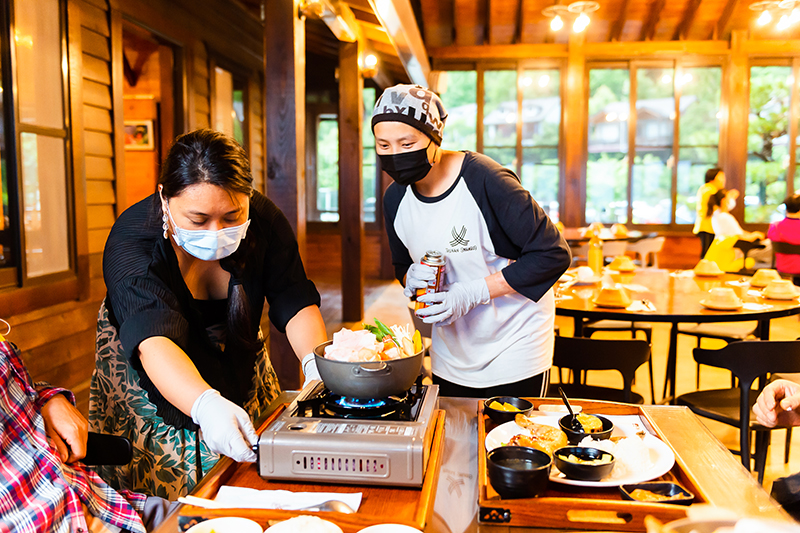
Three years ago, the chief of the Tourism Development Association at Smangus worked with the community and launched the afternoon set, offering pizza, waffles, and cake. In a separate kitchen, four people worked to make 60 pizzas, flattening and baking the dough, then adding different sauces and toppings to order. In addition to the common flavors such as seafood and vegetarian, there is also the boar meat pizza. Sauces come in tomato and pesto, among which, the “tana pesto” uses Ailanthus Prickly Ash to replace basil, creating a unique flavor you cannot get anywhere outside this area.
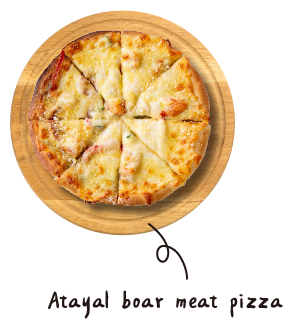


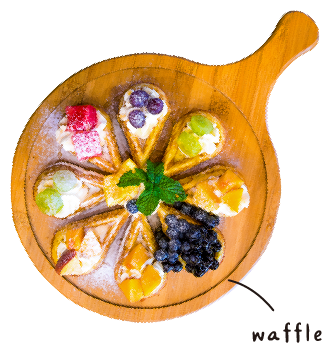
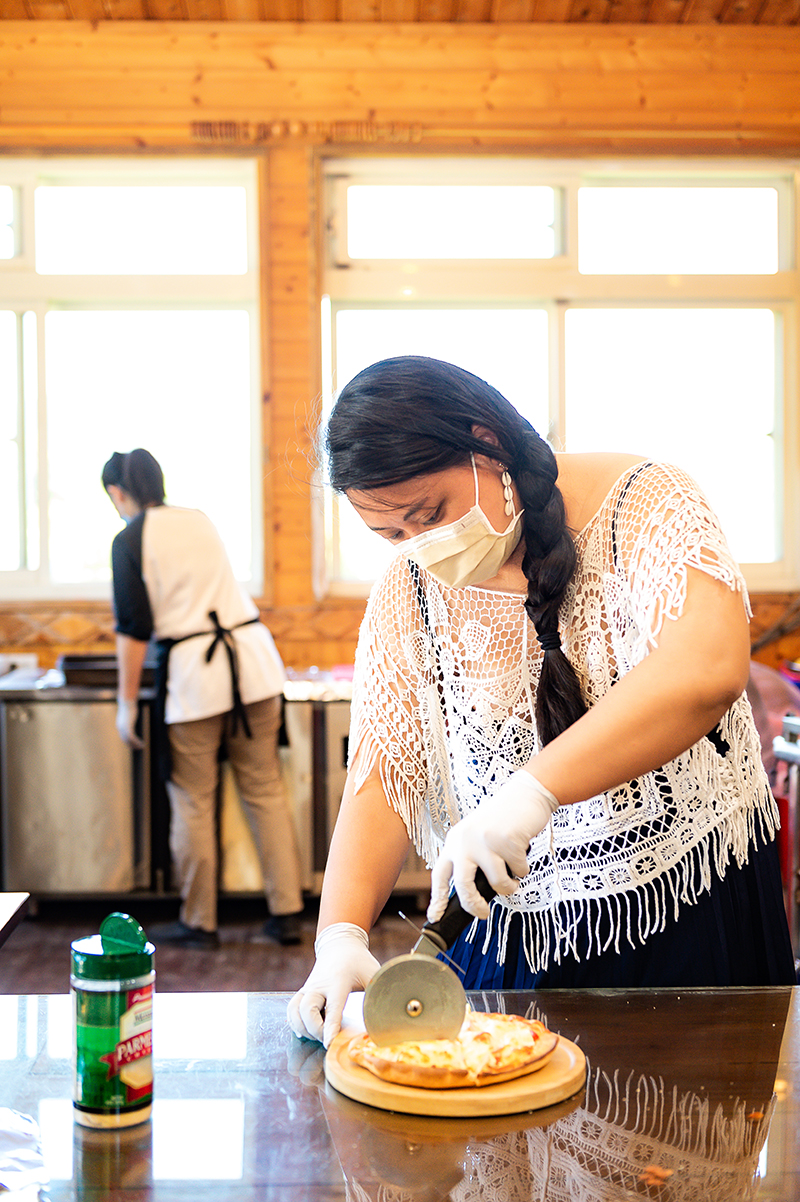
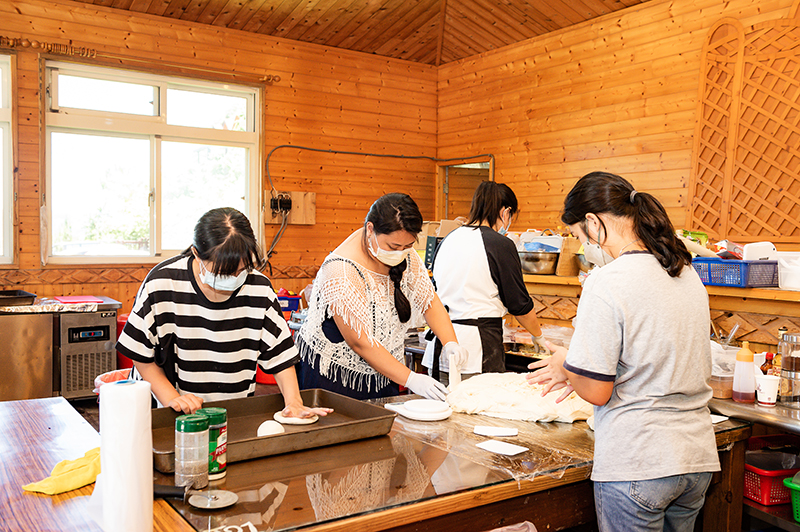
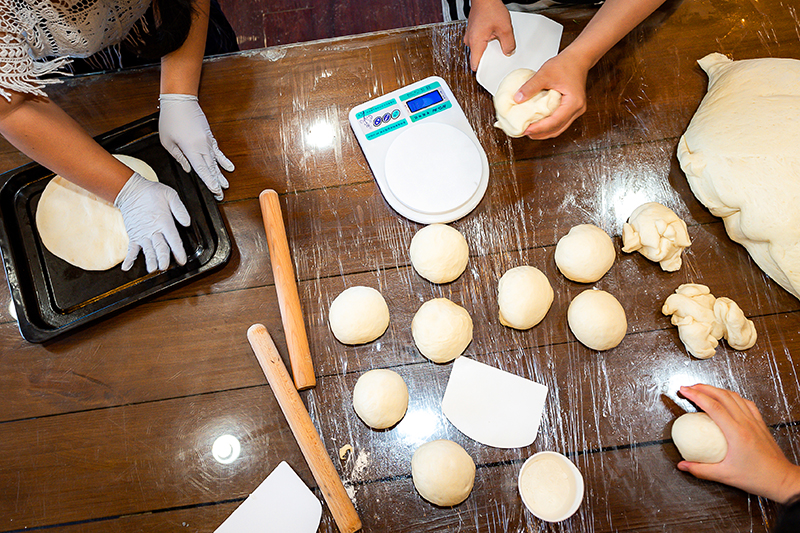
What's special about this place is that the housekeeping and restaurant jobs at Smangus are rotational, crews working the accommodation area today will work in the restaurants the next day. If you stay long enough in the community and really pay attention, you will see that the staff are all familiar faces who appear in different places. The goal of shift rotation is for people to get used to different kinds of work, with the different working hours required for various jobs, it also gives people an opportunity to take a break.

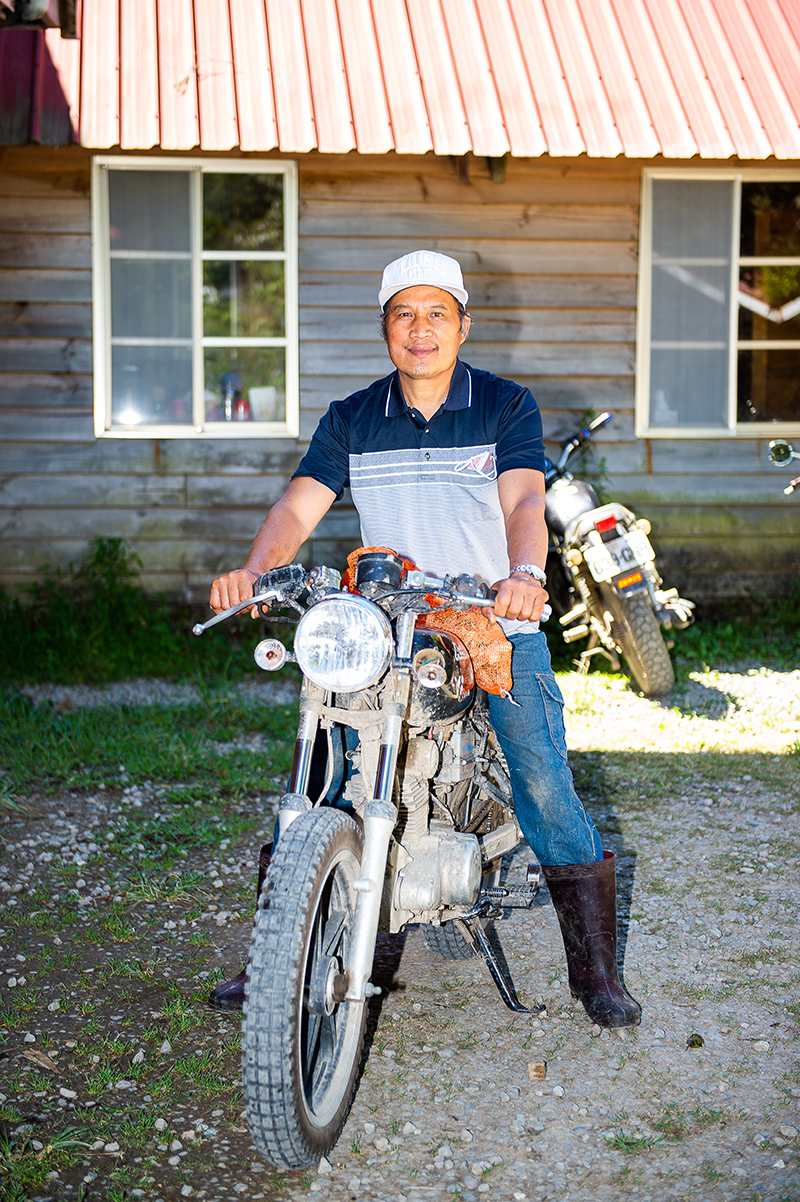
Originally, the ancestors of the Atayal lived in the mountains of Nantou, but with the expansion of the population, farming land became scarce, “if we continue to stay here, our children won't even have enough mountain pepper.” The ancestors thus began spreading north, climbing over the mountains just to find a bigger space for future generations to reside. Finally, the ancestors parted ways at Quri Sqabu (Siyuan Yakou, Datong Township in Yilan), and migrated separately towards New Taipei City, Hsinchu County, and Yilan. So unwilling to part ways, they hugged the tree so tight the barks came off. Ancestors of Traditional Leader Masay chose to settle at b’bu Sasaw, which became the current Smangus Indigenous Community.
Having fought against the colonial government, experienced the state oppression regarding traditional language and culture post-war, and living so deep in the mountains, life was harsh for the people of Smangus for quite a while. In 1991, with the “discovery” of the sacred trees in the community and the first road leading out built, the tourism business brought opportunities, and people who were working in the cities back to the community, but it also brought about competition. “We found the sacred trees together, and we built the road together. If all we saw were the money, each doing our own thing without love, the lands will eventually become just cash cow for the corporate world.” Luckily, wise was the traditional leader back then who practiced the ideal of shared lands, just as what the ancestors had wanted for them when they relocated, all so that the lives and culture of the Atayal can continue to spread.
Finally, the traditional leader asked Muni about her own community, and reminded her heavy-heartedly, “we must bring back our cultures, and safeguard the dignity and lands of indigenous peoples.”


Formosan black bear
There used to be hundreds of black bears in the mountain, but people enjoyed their meat so much that they are facing extinction. The black bear carving is in commemoration as well as a reminder to the younger generation to not hunt them anymore.
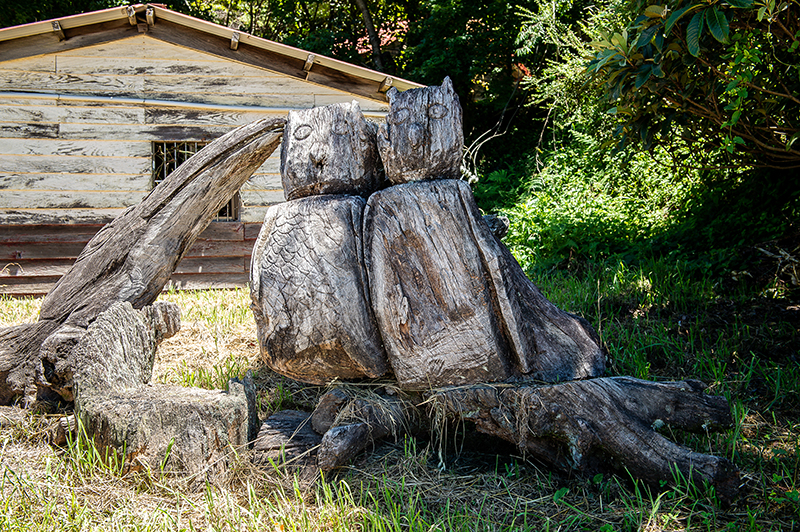
Owl
When women become pregnant, owls around their houses will start calling. If it is a boy, the owl will make “buh-buh” sounds; if it is a girl, the owl will make “nia-nia” sounds; if it is a boy and a girl, they will make both sounds, they are even better than the ultrasound.
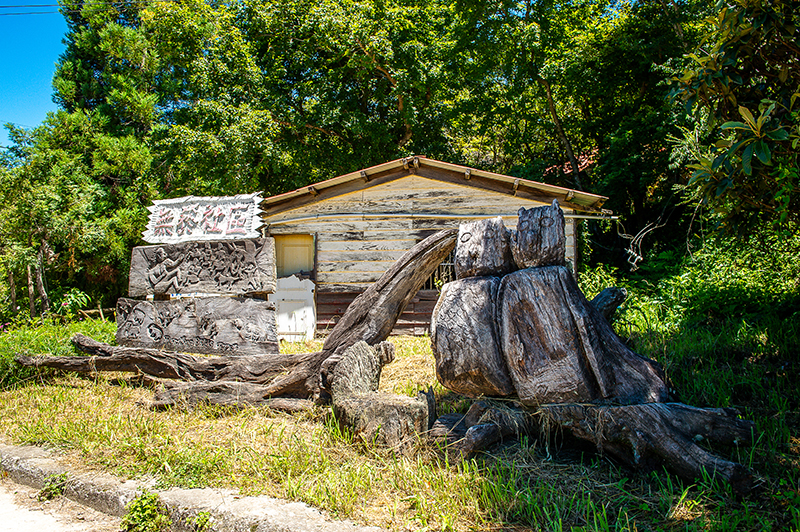
The babbler
The Taiwan grey-cheeked fulvetta is used by the Atayal for fortune-telling. When hunting, the hunters observe the bird's path of flight to determine the auspiciousness of this journey. If the flight is smooth, all is auspicious, if the flight is rushed and wavering, the journey could be filled with danger.

